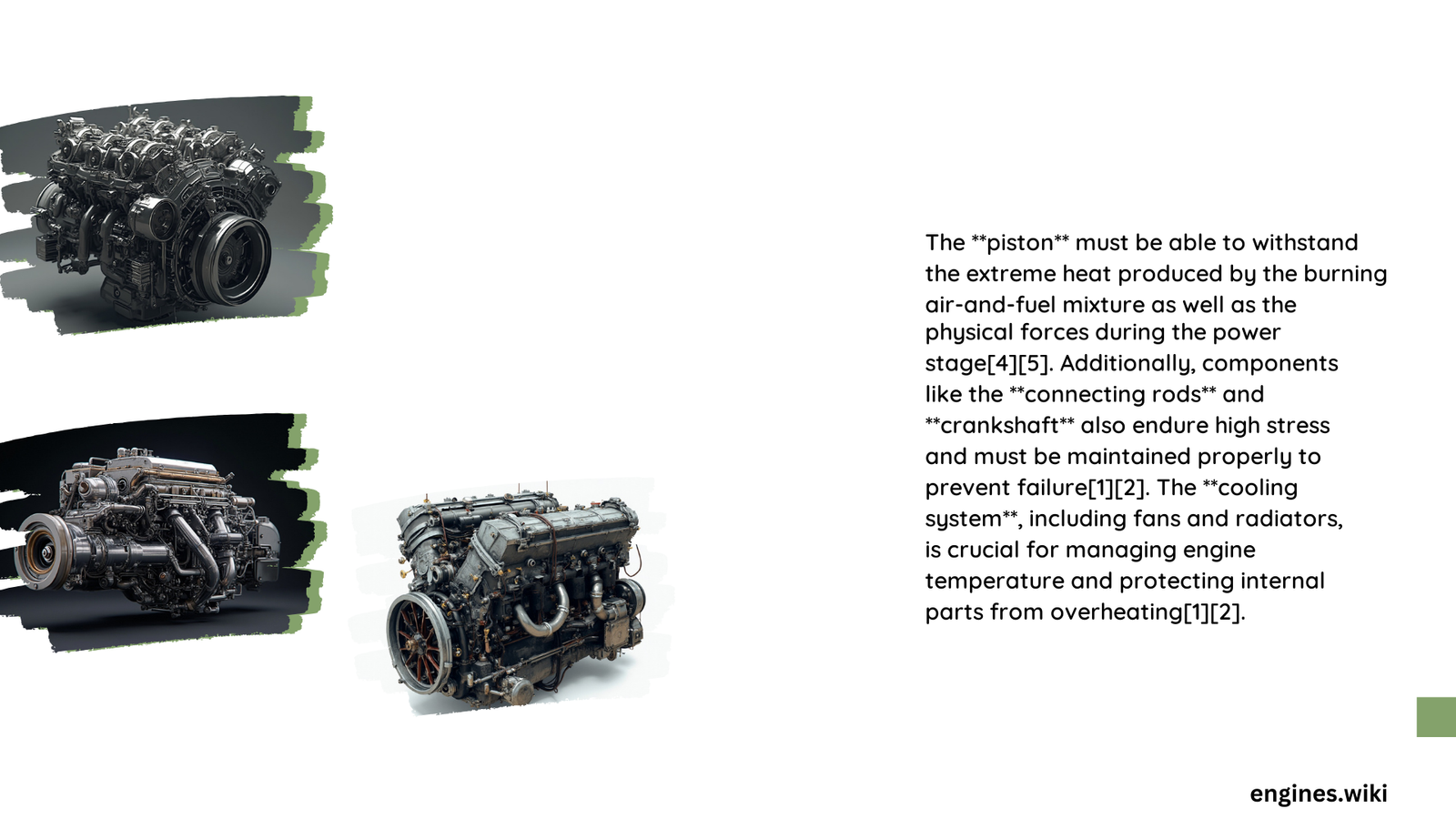The piston is the critical component in vehicle engines, particularly diesel engines, that must withstand extreme thermal and mechanical stress. Pistons are subjected to intense heat and pressure during engine operation, requiring them to be made from materials capable of enduring these harsh conditions. This article explores the various aspects of piston design, materials, and performance requirements to understand why they are crucial for engine durability and efficiency.
What Materials Are Used in Piston Manufacturing?
Pistons in diesel engines are typically constructed from two primary materials:
- Gray Cast Iron
- Aluminum Alloys
Each material offers unique properties that contribute to the piston’s ability to withstand extreme conditions:
- Gray Cast Iron:
- Higher thermal stability
- Better wear resistance
-
Tensile strength range: 200-300 MPa
-
Aluminum Alloys (e.g., Aluminum Alloy 6061):
- Lighter weight
- Improved heat dissipation
- Tensile strength range: 290-310 MPa
The choice between these materials depends on the specific engine requirements and design considerations.
What Temperature Can Pistons Tolerate?

Pistons in diesel engines must endure extreme temperatures during operation. The temperature at the top of the piston can reach approximately 400°C (752°F). This high temperature is a result of the combustion process and the continuous exposure to hot gases within the cylinder.
To withstand these temperatures, pistons are designed with:
- Cooling channels
- Thermal barrier coatings
- Optimized geometry for heat dissipation
How Are Pistons Tested for Durability?
Ensuring that pistons can withstand the extreme conditions they face requires rigorous testing and adherence to industry standards. Some key aspects of piston testing include:
Engineering Specifications and Testing Standards
- Material Standards:
- ASTM B211 for aluminum and aluminum-alloy components
- ISO 683-1 for heat-treatable steels (relevant for other engine parts)
-
ASTM A278 or ISO 185 for gray cast iron
-
Analysis Methods:
- Finite Element Methods (FEM)
-
Computational Fluid Dynamics (CFD)
-
Software Tools:
- ANSYS for thermal and mechanical stress analysis
Stress Analysis Techniques
Manufacturers and researchers use advanced computational techniques to simulate and analyze the stresses pistons experience:
- Thermal Analysis:
- Evaluates heat distribution and thermal expansion
-
Identifies potential hot spots and areas of thermal fatigue
-
Mechanical Stress Analysis:
- Assesses structural integrity under peak combustion pressures
-
Examines fatigue life and potential failure points
-
Combined Thermo-Mechanical Analysis:
- Simulates real-world conditions by combining thermal and mechanical loads
- Provides comprehensive insight into piston behavior during operation
What Are the Challenges in Piston Maintenance?
Maintaining pistons to ensure their longevity and performance is crucial for engine reliability. Several challenges arise in piston maintenance:
Wear Rates
Piston components experience wear over time due to the harsh operating conditions:
- Piston ring wear in heavy-duty diesel engines: Approximately 0.1-0.3 mm per 1000 hours of operation
- Factors affecting wear rates:
- Engine load
- Fuel quality
- Lubrication effectiveness
- Operating temperatures
Maintenance Intervals
Regular maintenance is essential to prevent premature piston failure:
- Minor inspections and adjustments: Every 500 to 1000 hours
- Major overhauls: Typically every 10,000 to 20,000 hours
- Factors influencing maintenance frequency:
- Engine type and size
- Operating conditions
- Fuel and oil quality
- Manufacturer recommendations
Replacement and Repair Costs
The financial aspect of piston maintenance can be significant:
- OEM Piston Kits:
- Price range: $500 to $2,000+
-
Factors affecting cost:
- Engine model
- Manufacturer
- Piston design complexity
-
Aftermarket Parts:
- Price range: $200 to $1,000
-
Generally more affordable but may vary in quality
-
Labor Costs:
- Range: $500 to $2,000 additional
- Depends on:
- Job complexity
- Mechanic’s rates
- Workshop location
How Do Piston Materials Compare in Performance?
To better understand the performance characteristics of different piston materials, let’s compare gray cast iron and aluminum alloy 6061:
| Characteristic | Gray Cast Iron | Aluminum Alloy 6061 |
|---|---|---|
| Density | Higher (7.2 g/cm³) | Lower (2.7 g/cm³) |
| Thermal Conductivity | Lower | Higher |
| Thermal Expansion | Lower | Higher |
| Wear Resistance | Better | Good, but less than cast iron |
| Strength-to-Weight Ratio | Lower | Higher |
| Cost | Generally lower | Higher |
| Machinability | Good | Excellent |
This comparison highlights the trade-offs between weight, thermal properties, and durability that engineers must consider when selecting piston materials for specific engine designs.
What Future Developments Are Expected in Piston Technology?
As engine technology continues to evolve, several advancements in piston design and materials are on the horizon:
- Advanced Coatings:
- Diamond-like carbon (DLC) coatings for reduced friction
-
Thermal barrier coatings for improved heat management
-
Composite Materials:
- Metal matrix composites for enhanced strength and reduced weight
-
Ceramic-reinforced alloys for improved wear resistance
-
Additive Manufacturing:
- 3D printing of pistons with complex internal structures
-
Customized designs for specific engine requirements
-
Smart Pistons:
- Integration of sensors for real-time monitoring
- Adaptive designs that respond to changing operating conditions
These developments aim to further improve piston performance, durability, and efficiency in future engine designs.
In conclusion, the piston remains a critical component that must withstand extreme thermal and mechanical stress in vehicle engines. Through careful material selection, advanced design techniques, and rigorous testing, manufacturers continue to push the boundaries of piston technology to meet the ever-increasing demands of modern engines.
References:
1. https://www.scientificbulletin.upb.ro/rev_docs_arhiva/full29c_164813.pdf
2. https://www.mechanicaljournals.com/ijmte/article/64/5-2-3-901.pdf
3. https://apps.dtic.mil/sti/tr/pdf/ADA306326.pdf
